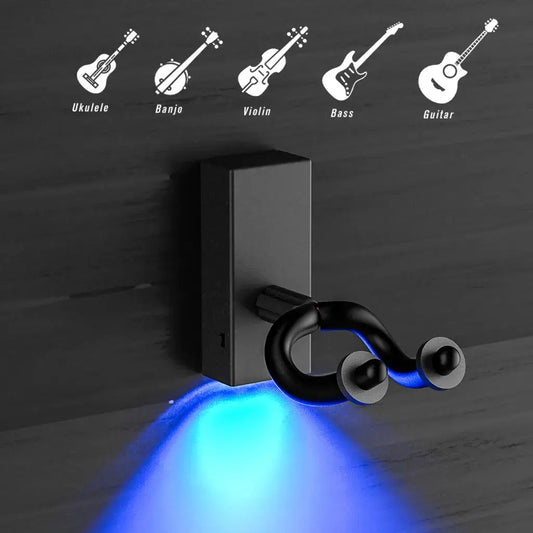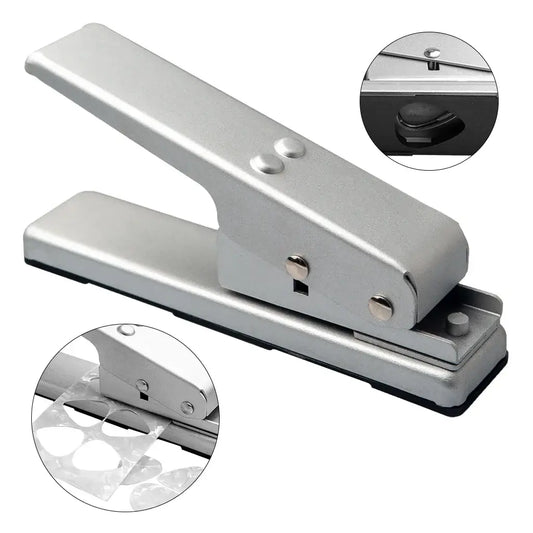Have you ever woken up with a catchy riff playing in your head and thought, “Maybe I can learn guitar while I sleep?” It might sound like the stuff of science fiction or a catchy infomercial, but the concept of sleep learning is intriguing enough to make us wonder: can we really harness the power of our slumber to master the guitar? In this comprehensive guide, we’ll explore the science behind sleep learning, practical techniques for integrating it into your guitar practice, and tips to set realistic expectations. Whether you’re a complete beginner or a seasoned strummer looking for that extra edge, read on to discover how you might unlock your inner rock star while you catch some Z’s.
The Allure of Sleep Learning

The Dream of Effortless Mastery
Imagine drifting off to sleep and, by morning, feeling a little more in tune with your guitar. The idea of learning something complex—like the intricate finger placements, chord progressions, or even scales—without active, conscious practice is undeniably appealing. After all, who wouldn’t want to save time and effort while making progress toward a lifelong passion?
Historical Context and Modern Curiosity
Sleep learning, sometimes referred to as hypnopedia, has been a topic of fascination for decades. Early experiments in the mid-20th century suggested that our brains might absorb information during sleep. While the initial studies were met with mixed results and skepticism, recent advances in neuroscience have revived interest in the possibility of tapping into our subconscious during sleep.
In today’s fast-paced world, the desire to optimize every moment—even the time we spend sleeping—has led to innovative techniques and digital tools aimed at boosting learning efficiency. The guitar, an instrument celebrated for its expressive range and emotional depth, seems like a perfect candidate for those looking to blend creativity with cutting-edge learning methods.
The Science Behind Sleep and Memory Consolidation

How Our Brain Processes Information During Sleep
Sleep isn’t just a passive state of rest; it’s an active period where our brains consolidate memories, process emotions, and even solve problems. During the different stages of sleep—especially during deep sleep (slow-wave sleep) and REM (rapid eye movement) sleep—our brains work on integrating new information with existing knowledge.
Studies have shown that sleep plays a crucial role in memory consolidation, turning short-term memories into long-term ones. This means that techniques designed to reinforce guitar lessons before sleep might help cement those skills more deeply than practice alone.
The Role of Subconscious Processing
While you’re asleep, your subconscious mind is still active. Although it might not be capable of learning new complex motor skills entirely on its own, the subconscious can process and reinforce patterns it was exposed to during your waking hours. This is why many sleep learning techniques involve listening to recordings of lessons, chord progressions, or even guided meditations that integrate musical theory with relaxation techniques.
Scientific Studies and Their Implications
Several studies have examined the potential of sleep learning in various domains. For instance, research into language acquisition has revealed that playing audio in a foreign language during sleep can improve pronunciation and vocabulary recall. While the application of these findings to a skill as intricate as playing the guitar is still emerging, the underlying principle remains promising: by leveraging the brain’s natural consolidation processes, you might enhance your learning efficiency.
Techniques for Learning Guitar in Your Sleep

1. Pre-Sleep Priming: Setting the Stage
Before you drift off, spend some time with your guitar. Engage in active practice, even if it’s just reviewing chords, scales, or short pieces. This pre-sleep priming can “feed” your brain the necessary information, making it more receptive during sleep. Consider the following tips:
- Short Practice Sessions: A 15- to 30-minute session focusing on a specific aspect of guitar playing can be more effective than long, unfocused practice.
- Visualization: Spend a few minutes visualizing your fingers moving over the fretboard smoothly. Mental practice has been shown to reinforce actual performance.
- Reviewing Recordings: Listen to recordings of your playing or professional performances. This auditory input can help familiarize your brain with the sound and feel of good technique.
2. Subliminal Audio Cues
One popular method is the use of subliminal audio tracks. These tracks play soft, repetitive guitar lessons, chord sequences, or motivational messages in the background as you sleep. Here’s how you can incorporate this technique:
- Curate Your Playlist: Choose high-quality recordings that focus on specific techniques or pieces you’re trying to learn. Ensure the volume is low enough to be non-disruptive yet audible enough to register subconsciously.
- Use Sleep Timers: Many sleep apps allow you to set a timer for how long the audio plays. This ensures that the sound isn’t disruptive during the deeper stages of sleep.
- Consistency is Key: Integrate these audio sessions into your nightly routine. Over time, your brain may begin to associate these cues with improved recall and performance when you’re awake.
3. Binaural Beats and Brainwave Entrainment
Binaural beats involve playing two slightly different frequencies in each ear, which can influence your brainwave patterns. Proponents claim that certain frequencies can encourage the brain to enter states conducive to memory consolidation and creative insight. Here’s how you can experiment with binaural beats:
- Find the Right Frequency: Research suggests that certain frequencies, particularly in the delta (0.5–4 Hz) and theta (4–8 Hz) ranges, are associated with deep relaxation and REM sleep. Look for binaural beat recordings specifically designed for learning or creativity.
- Pair with Guitar Audio: Combine binaural beats with soft guitar lessons or ambient music to create a holistic audio experience.
- Monitor Your Experience: Keep a sleep journal noting any changes in your recall or performance upon waking. While the scientific consensus on binaural beats is still developing, personal experimentation might reveal benefits for your unique learning style.
4. Guided Sleep Meditations Focused on Music
Guided meditations can help calm your mind, reduce stress, and prepare your brain for the absorption of new information. When these meditations include musical elements, they can double as a form of passive learning. Consider the following:
- Choose Music-Infused Meditations: Look for guided meditations that incorporate soft guitar music or subtle lessons embedded within the narrative.
- Relaxation Techniques: Practice deep breathing or progressive muscle relaxation before playing the meditation. This can help you enter a state of deep relaxation more quickly, maximizing the potential for memory consolidation.
- Regular Practice: Like all forms of learning, consistency is crucial. Regular meditation combined with pre-sleep guitar practice can help create a robust framework for integrating new skills.
Integrating Sleep Learning With Traditional Practice

The Complementary Approach
While the idea of learning guitar in your sleep is captivating, it’s important to recognize that it should complement, not replace, traditional practice. Here’s why a combined approach works best:
- Active vs. Passive Learning: Active practice—where you consciously engage with your instrument—is essential for developing fine motor skills and correcting mistakes. Sleep learning, on the other hand, reinforces what you’ve already practiced.
- Building a Foundation: Before expecting your brain to assimilate new techniques during sleep, it’s vital to have a solid foundation built through regular, deliberate practice. Sleep learning can then act as a booster to solidify those techniques.
- Feedback and Adjustment: When you’re awake, you have the opportunity to receive feedback—either from a teacher, a peer, or even your own observations. This feedback is critical for adjusting techniques and making progress.
Daily Routines and Schedules
Creating a balanced routine is essential for integrating sleep learning with daytime practice. Here are some suggestions:
- Morning Review: Start your day by briefly reviewing the material you focused on the night before. This reinforces the sleep-learned content and transitions it into active memory.
- Scheduled Practice Blocks: Dedicate specific times during the day solely for guitar practice. This could be in the morning before work or in the evening when you’re most relaxed.
- Sleep Hygiene: Ensure that your sleep environment is conducive to both quality sleep and effective learning. This means a cool, dark, and quiet room, free from disruptions.
Realistic Expectations and the Limits of Sleep Learning

What Science Tells Us
It’s essential to approach sleep learning with realistic expectations. While there is promising evidence for its potential, it’s not a magic solution that will turn you into a Guitar virtuoso overnight. Here’s what to keep in mind:
- Incremental Gains: Expect small, incremental improvements rather than sudden, dramatic leaps in ability. The consolidation of skills during sleep will likely reinforce what you already know rather than impart entirely new techniques.
- Individual Differences: Not everyone responds to sleep learning in the same way. Factors like age, overall sleep quality, and even genetics can play a role in how effectively you can learn in your sleep.
- The Role of Conscious Practice: Ultimately, nothing beats the value of dedicated, conscious practice. Sleep learning is best seen as an enhancement to your regular practice routine, not a replacement.
Overcoming Skepticism
Skepticism is natural, especially when dealing with concepts that challenge traditional learning paradigms. Here are some ways to maintain a balanced perspective:
- Embrace Experimentation: Treat sleep learning as an experimental addition to your practice regimen. Keep a journal to document your progress, noting any correlations between your sleep routines and improvements in your playing.
- Consult Experts: Engage with both sleep scientists and experienced guitar instructors to get a well-rounded view of how sleep learning might benefit you.
- Stay Informed: The fields of neuroscience and music education are constantly evolving. Keeping abreast of the latest research can help you refine your techniques and set realistic expectations.
Tools and Technology to Boost Your Sleep Learning
Sleep Learning Apps and Devices
The digital age has gifted us a plethora of apps and devices aimed at enhancing sleep quality and facilitating passive learning. Some popular options include:
- Sleep Trackers: Devices and apps that monitor sleep stages can help you understand your sleep patterns and determine the best times for audio playback.
- Meditation and Sleep Audio Apps: Platforms like Calm, Headspace, and specialized sleep-learning apps offer guided meditations, binaural beats, and ambient soundscapes that can be tailored to your guitar practice needs.
- Customizable Playlists: Use music streaming services to create playlists that blend guitar lessons with soothing ambient sounds, ensuring that your brain is exposed to the right cues throughout the night.
Setting Up Your Sleep Environment
A well-optimized sleep environment can make all the difference when it comes to integrating sleep learning into your nightly routine. Consider the following tips:
- Noise Management: Use white noise machines or earplugs if ambient noise is an issue, but also consider that some background audio is necessary for sleep learning.
- Comfortable Bedding: Invest in a quality mattress and pillows to ensure uninterrupted, restful sleep.
- Ambient Lighting: A darkened room is ideal. Consider blackout curtains or sleep masks to keep distractions at bay.
Expert Opinions and Success Stories
What Musicians and Researchers Are Saying
While definitive scientific proof of learning guitar in your sleep is still emerging, many musicians and researchers have reported anecdotal evidence supporting its benefits. Some claim that regular exposure to guitar audio during sleep has helped them recall chord progressions more quickly or even sparked creative ideas during dreams.
Renowned sleep researcher Dr. Amelia Foster notes, “While sleep learning shouldn’t replace traditional practice, it has the potential to serve as a valuable adjunct, especially when used to reinforce material learned during the day.” Such endorsements encourage a balanced, hybrid approach to mastering the guitar.
Real-Life Experiences
Numerous guitar enthusiasts have taken the plunge into sleep learning. For instance, Jamie, a self-taught guitarist from Austin, TX, incorporated subliminal guitar lessons into her nightly routine. Over several months, she noticed a subtle but steady improvement in her ability to transition between chords and maintain consistent strumming patterns. While the changes weren’t overnight miracles, they provided her with an extra layer of confidence during her daytime practice sessions.
Combining Creativity With Science: Your Path Forward
Designing Your Personal Sleep Learning Plan
Given the exciting potential of sleep learning, it’s time to design a plan that works for you. Start by outlining your specific goals. Are you aiming to master a particular song, improve your chord transitions, or simply build a stronger foundational technique? Once you have clear objectives, you can tailor your sleep learning routine to address those areas.
Steps to Get Started:
- Set Specific Goals: Define what aspects of your guitar playing you want to improve.
- Plan Your Pre-Sleep Routine: Dedicate a short, focused practice session before bed.
- Select Appropriate Audio Tracks: Choose recordings that align with your learning objectives.
- Monitor Your Progress: Keep a journal or use digital tracking tools to document improvements.
- Adjust as Necessary: Use feedback from both your waking practice and sleep learning to refine your approach.
Balancing Patience and Persistence

Remember, integrating sleep learning is not a quick fix—it’s a supplement to your overall practice strategy. Embrace the process with patience and persistence. Over time, the incremental benefits can add up, contributing to a richer, more nuanced mastery of the guitar.
Conclusion
The dream of learning guitar in your sleep is no longer confined to the realm of fantasy. While it’s important to remain realistic and grounded in traditional practice methods, emerging techniques like subliminal audio cues, binaural beats, and guided sleep meditations offer promising avenues for supplementing your musical journey. By understanding the science behind sleep learning and integrating these methods into a well-rounded practice routine, you can tap into the full potential of your brain’s natural learning processes—even as you sleep.
Remember, every musician’s journey is unique. What works for one person might require tweaking for another. So, experiment, monitor your progress, and most importantly, enjoy the process of discovering how your subconscious can become your secret weapon in mastering the guitar.
FAQ
Q1: Can I really learn to play the guitar in my sleep?
A1: While sleep learning isn’t a substitute for active, conscious practice, research suggests that your brain can consolidate information during sleep. Techniques like listening to guitar lessons or binaural beats can reinforce skills learned during the day, potentially accelerating your progress.
Q2: What are the best techniques for integrating sleep learning with my guitar practice?
A2: A successful approach typically includes pre-sleep priming (a focused practice session before bed), subliminal audio cues, binaural beats, and guided sleep meditations that incorporate musical elements. Combining these with traditional practice ensures a balanced learning experience.
Q3: How long will it take to see improvements from sleep learning?
A3: Results vary from person to person. Most users report incremental improvements over several weeks or months. Consistency is key, and sleep learning is best viewed as a supplement to your daytime practice.
Q4: Are there any risks or downsides to using sleep learning methods?
A4: Generally, sleep learning methods like playing soft audio in the background are safe for most people. However, it’s important to ensure that the audio isn’t disruptive to your sleep quality. If you experience any sleep disturbances, adjust the volume or timing of the audio playback.
Q5: What role do technology and apps play in sleep learning for guitar?
A5: Technology can be a valuable ally. Sleep trackers, meditation apps, and customizable audio playlists can help you tailor your sleep learning experience. These tools assist in monitoring your sleep stages, ensuring that your learning sessions are optimally timed without compromising the quality of your sleep.
Q6: Can sleep learning replace traditional guitar lessons?
A6: No, sleep learning should not replace conventional practice or professional instruction. It’s an additional tool to reinforce and enhance the skills you build through active learning and regular practice.
Q7: How do I measure the effectiveness of sleep learning in my progress?
A7: Keeping a detailed journal, recording your practice sessions, and even using apps to track your performance can help you gauge the incremental improvements from your sleep learning techniques. Over time, these records can highlight patterns and successes that reinforce your progress.
By embracing a balanced approach that marries the benefits of active practice with the innovative potential of sleep learning, you’re setting yourself up for a richer, more fulfilling musical journey. So tonight, as you drift off to sleep, let the gentle strumming of guitar lessons accompany you, and who knows—you might just wake up one day to find that your dreams are guiding your fingers on the fretboard. Happy strumming, and sweet dreams!
Author bio:

Dr. Robin Alexander
Dr. Robin Alexander, an MD Pathologist and passionate guitarist, combines his love for music and science. As a guitar enthusiast, he shares valuable insights and tips on guitar playing here at Guitarmetrics, helping musicians enhance their skills and enjoy their musical journey.























